Fort Pontchartrain du Detroit
Introduction
Text-to-speech Audio
Images
Fort Pontchartrain du Detroit was constructed in 1701
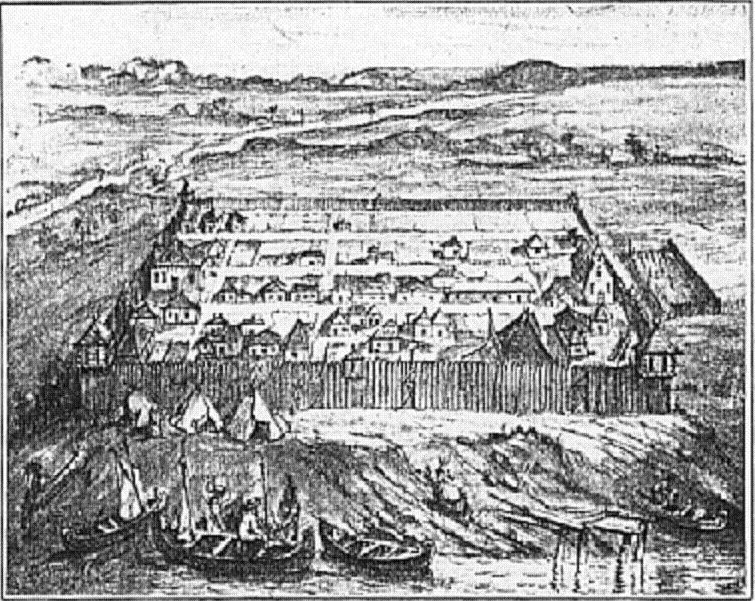
Cadillac landing with the first permanent settlers at the site of modern-day Detroit
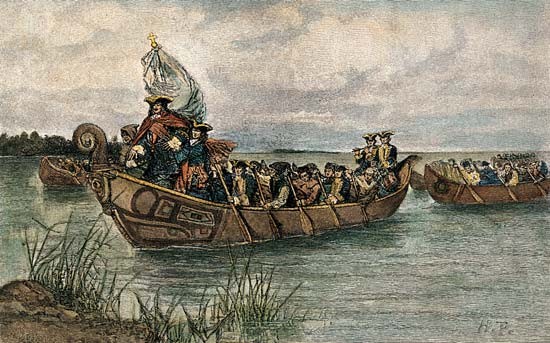
Fort Pontchartrain from the Detroit River
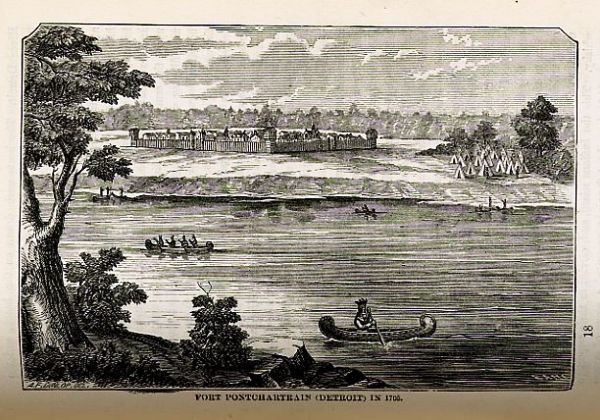
A detailed view of Fort Pontchartrain
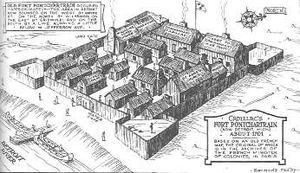
Location of the fort along the Detroit River
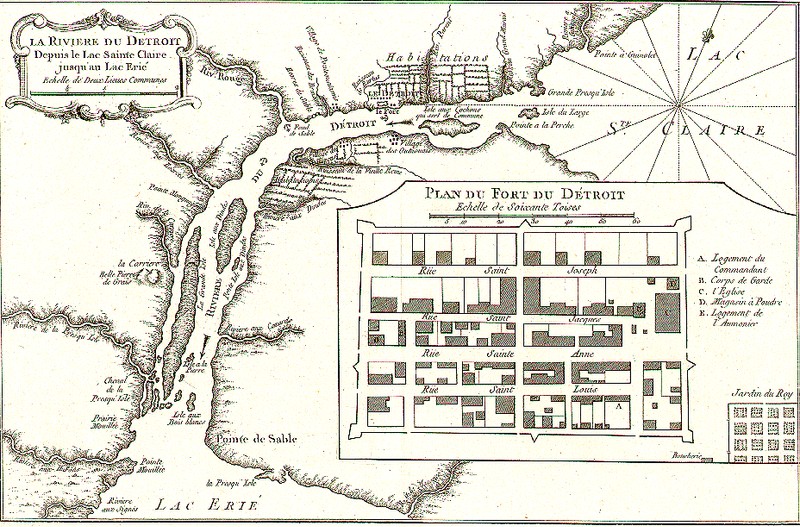
Map of the inside of the fort. A: St Anne's Chapel B: the house of the commandant C: the guardhouse
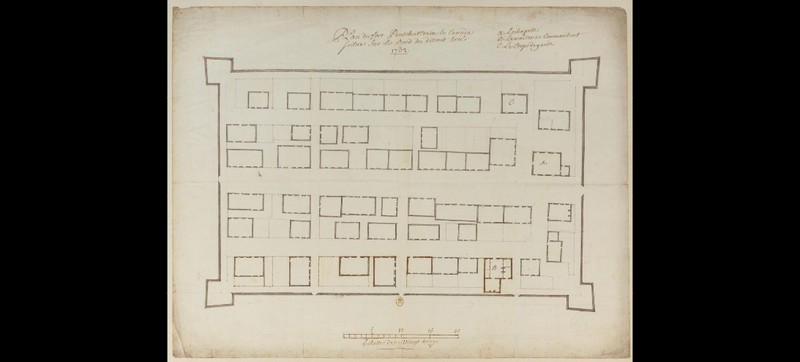
Map of the fort in 1749
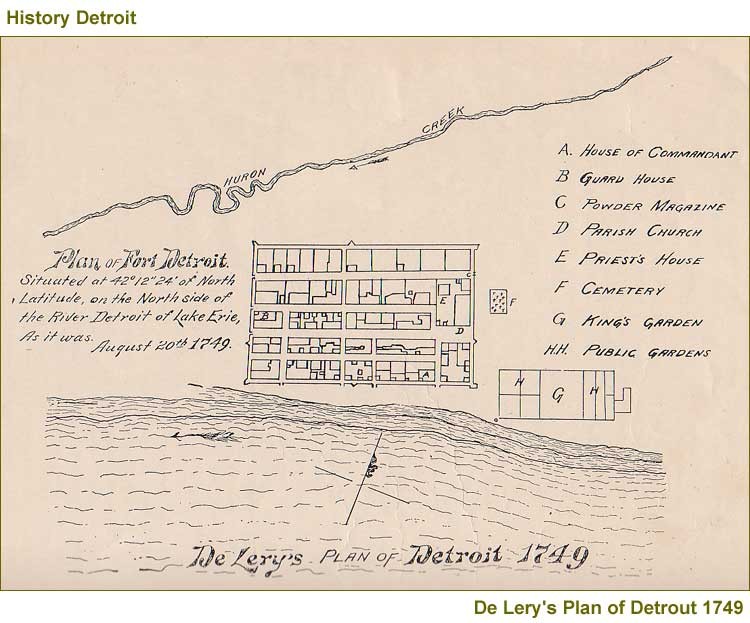
Map of the fort in 1763
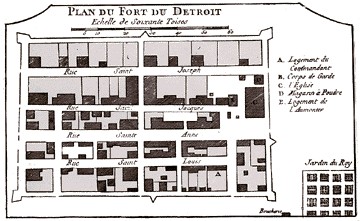
The siege of the fort by Pontiac in an effort to drive out the British, who had taken control of Detroit in 1760
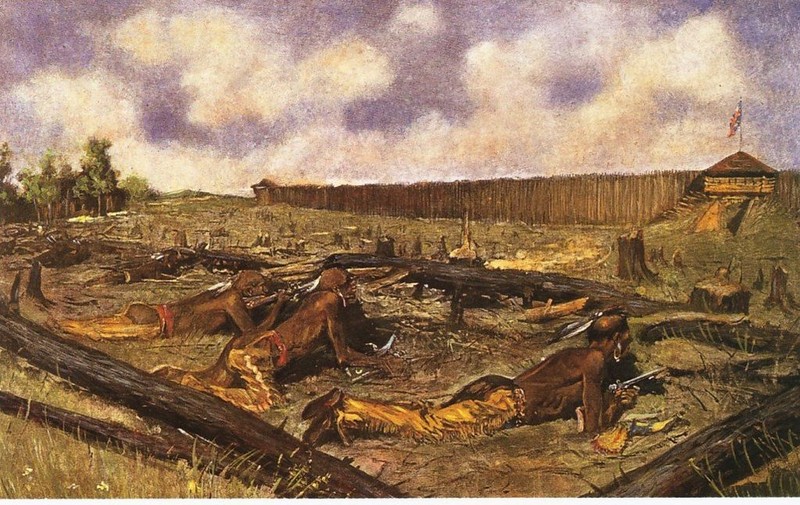
A statue and historical marker in Hart Plaza in downtown Detroit commemorates the landing of Cadillac
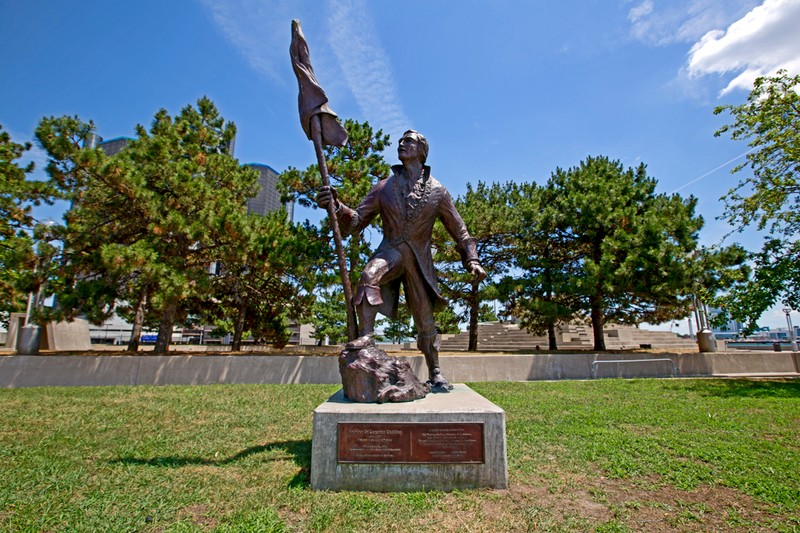
Backstory and Context
Text-to-speech Audio
Fort Pontchartrain du Detroit was established in 1701 by Antoine de Lamothe Cadillac. Cadillac had commanded Fort Michilimackinac in the Mackinac Straits, and convinced King Louis XIV to create a colony further south to defend the French fur trade against the British. On July 24, 1701, Cadillac landed at what is now downtown Detroit with a group of 100 French soldiers and 100 Algonquin Native Americans who had traveled by birchbark canoe with him from Montreal. Fort Pontchartrain de Detroit was named after Louis Phélypeaux de Pontchartrain, a French minister of marine and colonial affairs who had approved the voyage. “Du détroit” is French for “of the strait,” referring to the narrow river separating what is now the U.S. and Canada. At the time, the fort stood on a bank directly above the Detroit River. The fort was built from logs into a stockade, with 12 feet tall pickets.1 It took up about one square acre, covering the area that is now bordered by Jefferson, Woodbridge, Griswold, and Shelby Streets.2 A small village grew up within the walls, which included Ste. Anne’s Church, the first building built in Detroit. On February 2, 1704, Cadillac’s daughter Marie Therese was born at the fort, the first European born in Detroit.1
Cadillac encouraged Native American tribes to settle in the area in exchange for protected trading opportunities. Within a few years, 2,000 people from the Huron, Miami, Ottawa, and Chippewa tribes were living in villages around the fort. In 1706, there was an attack on the fort by a local tribe after one of the French commanders’ dogs bit an Ottawa. 30 Ottawa were killed as well as the priest at Ste. Anne’s Church during the attack. Another attack came from the Fox tribe in 1712, which lasted almost 3 weeks before being put down by tribes allied with the French.1
Cadillac began distributing lands around the fort to French settlers in exchange for rent and a share of their crops. However, he often charged unreasonable amounts and word got back to the French government of his corrupt behavior. He was reassigned to the undesirable post of governor of the Louisiana colony in 1710 and never returned to Detroit. (He eventually returned to France, where he died in 1730.)1
By 1718, large sections of the fort were in disrepair, and it was rebuilt. In 1740, the first home was built outside the fort walls by a farmer named Jean Baptiste Baudry. Detroit’s population reached 900 in 1749, and the Governor of New France offered incentives to get more Frenchmen to settle and farm the area. The fort was expanded to accommodate the growing population. However, tensions between the French and British increased, and in 1754, the French and Indian War began. France sent 400 militia to the fort along with supplies. After years of intense fighting, the British took command of the fort on November 19, 1760. At the time, there were about 2,000 inhabitants and 300 buildings.1 The British expanded the fort west and north by about 50 feet in each direction.2
The fighting was not over though. Relations with the Native Americans deteriorated under British rule. Ottawa Chief Pontiac led a campaign to drive Europeans from the Great Lakes region. With 250 warriors, he laid siege to Fort Pontchartrain for six months in 1763. (His campaign would ultimately prove unsuccessful, and he signed a peace treaty with the British three years later.) During the American Revolution, Fort Pontchartrain was fortified with several hundred British soldiers. They used it as a base from which to make attacks on Ohio and to hold American prisoners, including patriot Daniel Boone at one point.1 In 1778, a new fort was built at a more strategic location and named Fort Lernoult after British Captain Richard Lernoult (see separate Clio entry on Fort Lernoult). If anything still remained of the fort in 1805, it would have been destroyed by a widespread fire that overtook the city, leveling every building except Fort Lernoult, which was then renamed Fort Detroit.
A historical marker about Fort Pontchartrain exists on the Jefferson Ave wall of the Crowne Plaza Detroit Downtown Riverfront Hotel, near the corner of Washington Blvd. Another marker and statue on the east side of Hart Plaza commemorates the landing of Cadillac with the first permanent settlers.Cite This Entry
Nickel, Jamie. "Fort Pontchartrain du Detroit." Clio: Your Guide to History. July 29, 2016. Accessed April 26, 2025. https://theclio.com/tour/977/1

